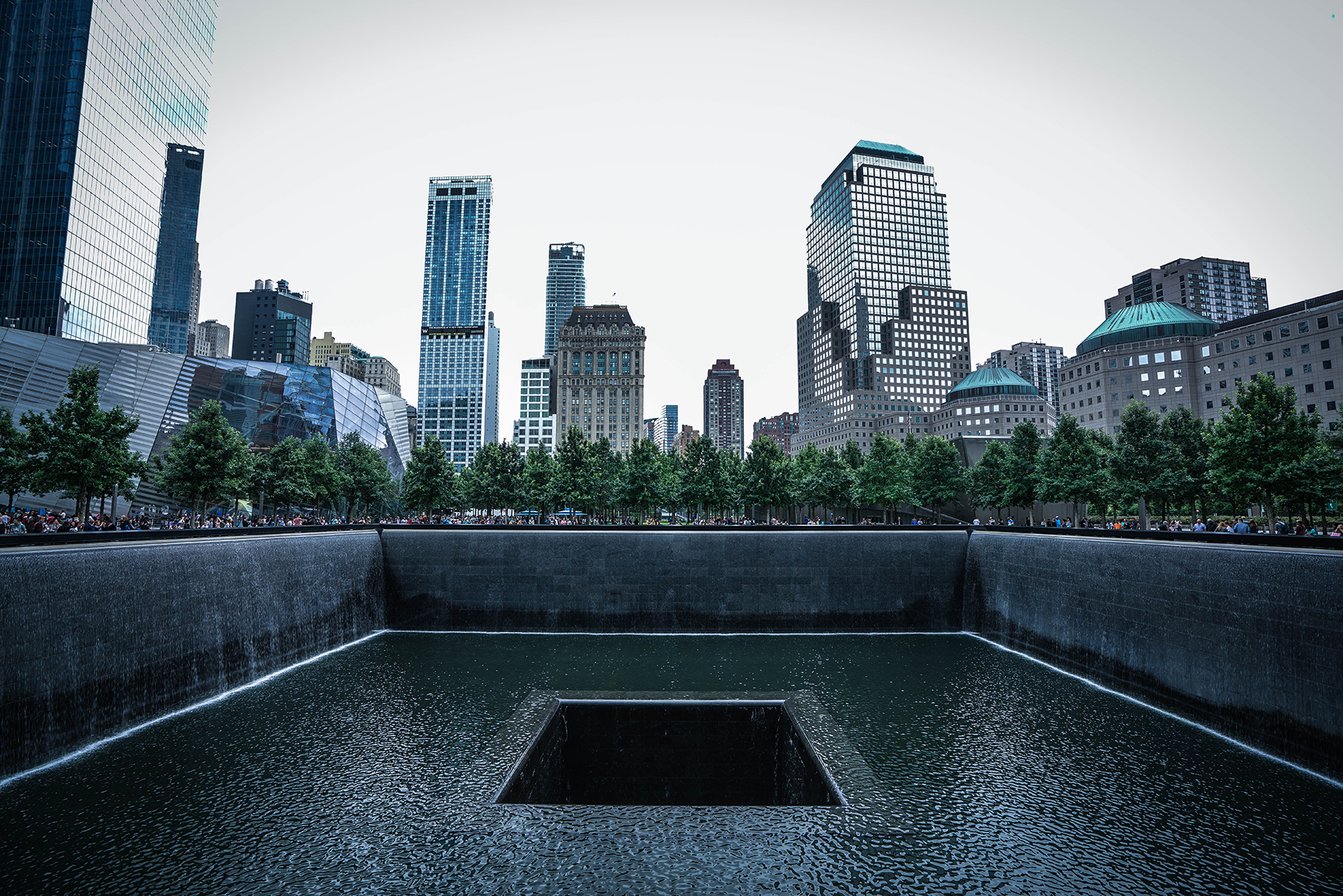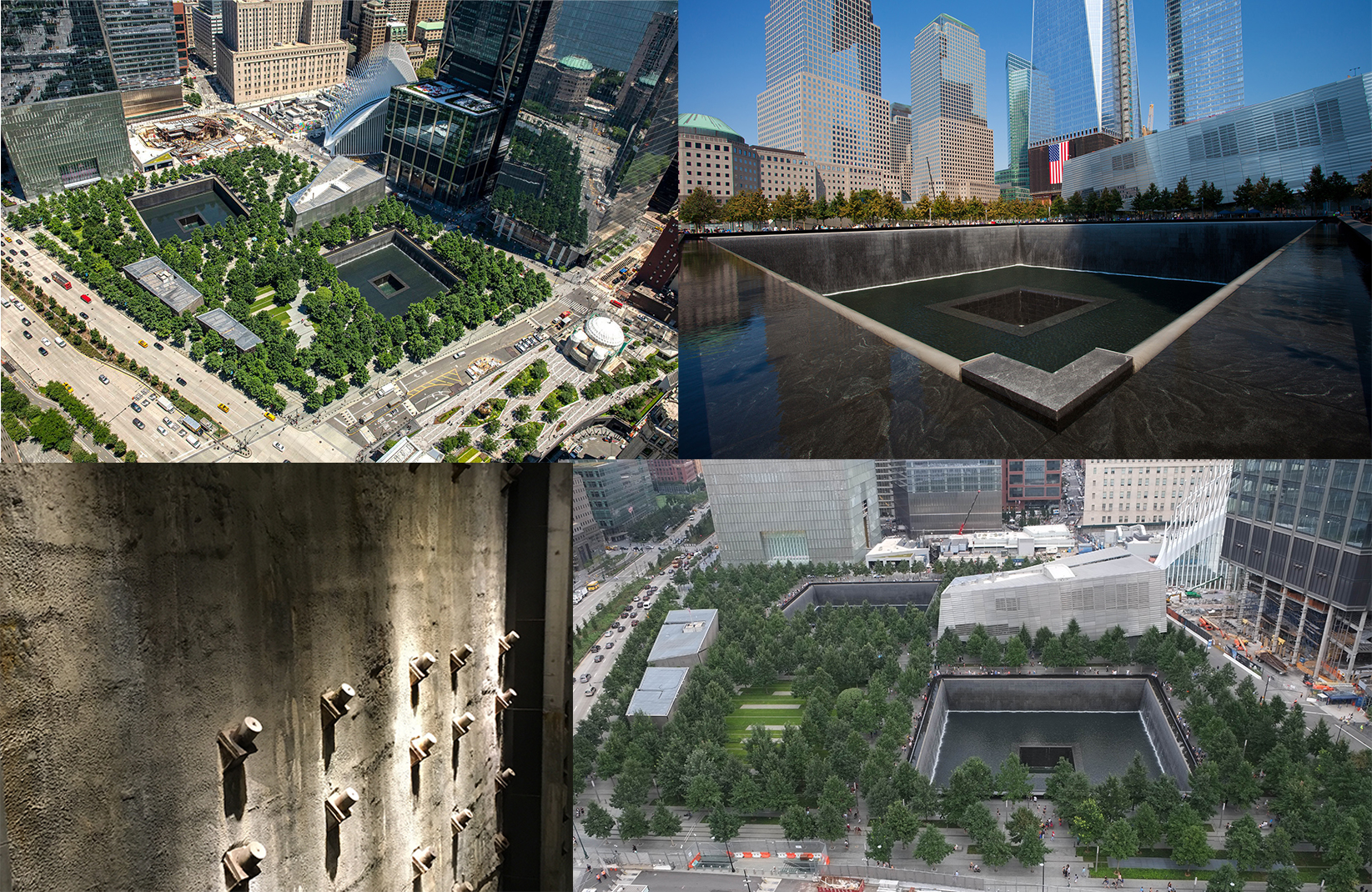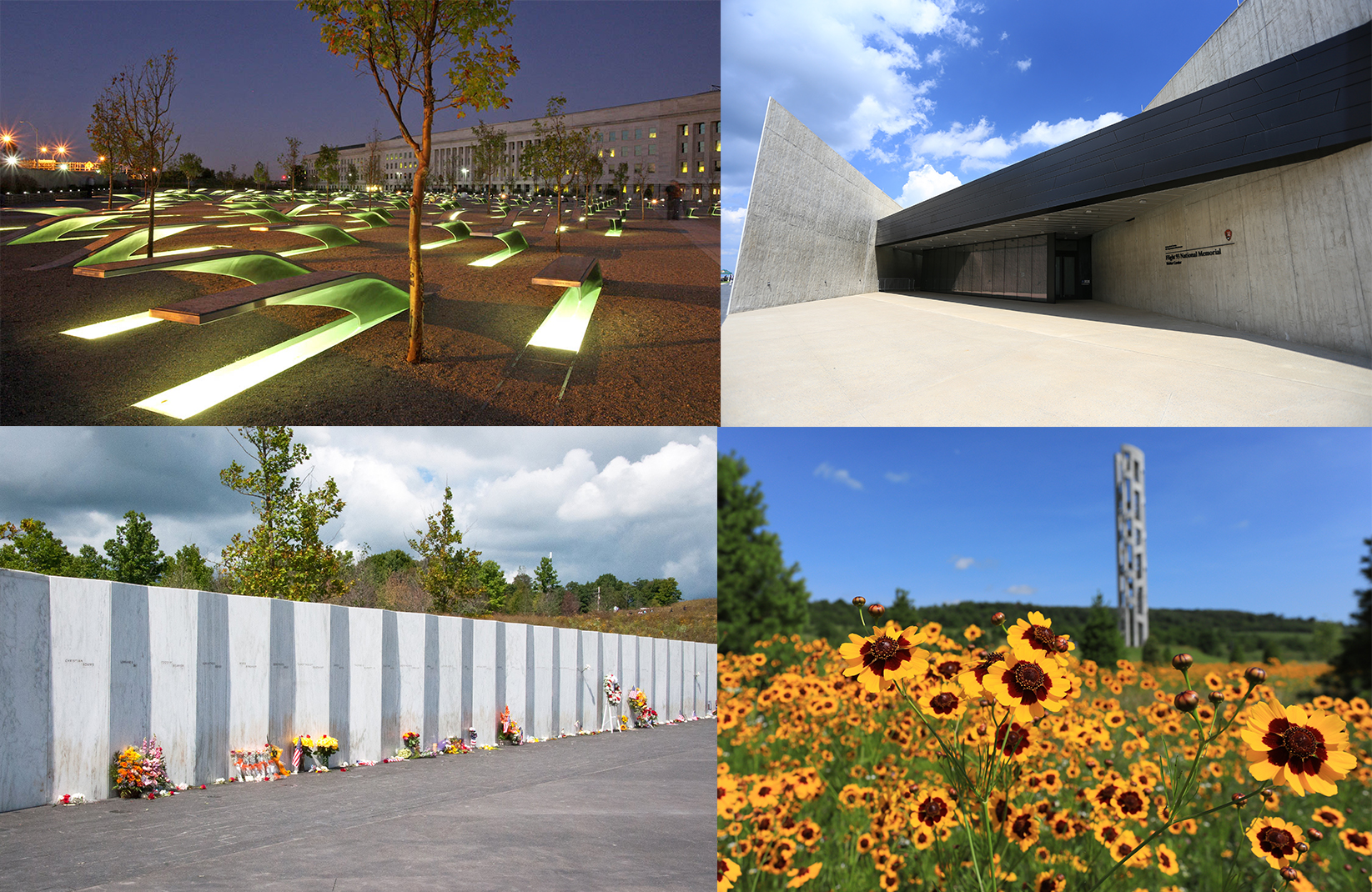
By Laurie A. Shuster
The 9/11 Memorial
Reflecting Absence, the World Trade Center memorial designed by architect Michael Arad and landscape architect Peter Walker, is literally and figuratively moving. Established on the footprints of the absent twin towers, the memorial consists of two 1-acre granite reflecting pools with water cascading down all sides. The waterfalls drop for 30 ft, propelled by 16 pumps pushing 600,000 gal. of water; 52,000 gal. of water run over the four sides of the pools every minute. WSP served as the structural engineer for the memorial.
The pools are surrounded by bronze parapets bearing the inscriptions of 2,983 names: the victims of the Sept. 11, 2001, terrorist attacks on the World Trade Center and the Pentagon and aboard Flight 93, which crashed in a field in Pennsylvania, as well as the victims of the WTC bombing on Feb. 26, 1993. The website explains that Arad’s idea for the pools centered on the notion of “absence made visible.” “Although water flows into the voids, they can never be filled. The sound of the cascading water makes the pools a place of tranquility and contemplation separate from the bustling noises of the city.”

The 9/11 Memorial Museum
The museum comprises an at-grade pavilion and a below-ground exhibition structure. Visitors descend to the main exhibition space alongside the Survivors’ Stairs, which were used as an escape route by hundreds of people on 9/11. Two pieces of steel framing remaining from one of the towers, known as the tridents, can be viewed along the descent.
The subterranean museum, constructed on bedrock, houses more than 14,400 physical artifacts, including a portion of the original slurry wall, referred to as the bathtub, that was designed to keep the Hudson River from flooding the site. The bathtub, designed by engineer George Tamaro, P.E., NAE, D.GE(Ret.), Dist.M.ASCE, who worked for Mueser Rutledge Consulting Engineers, was the only structural element at the WTC site to withstand the attack. The museum also includes 7,311 pieces of ephemera and 60 steel fragments and vehicles, including first responder vehicles. The In Memoriam exhibition honors the victims by displaying biographies and profiles, portraits, spoken-word remembrances, and mementos contributed by family members.
The National 9/11 Pentagon Memorial
The National 9/11 Pentagon Memorial, designed by architects Julie Beckman and Keith Kaseman, was constructed along the path that American Airlines Flight 77 took as it was flown into the Pentagon. The 184, 14 ft long memorial units take the form of cantilevered stainless steel, illuminated benches, each inscribed with one victim’s name. The benches are aligned with the Age Wall that begins at a height of 3 in. and rises by 1 in. increments to 71 in., the numbers representing the ages of the youngest and oldest victims from the Pentagon. Those benches that represent the 125 people who died while working or visiting the Pentagon are oriented so that when visitors read their inscribed names, the Pentagon can be seen in the background. Conversely, the names of the 59 victims who died aboard the aircraft are inscribed so that when read, the sky is in view.

The Flight 93 National Memorial
The Flight 93 National Memorial was constructed near Shanksville, Pennsylvania, the site at which a United Airlines plane crashed as its 40 passengers and crew fought to prevent the terrorists who had hijacked the aircraft from using it to attack a site in Washington, D.C. The design, by Paul Murdoch Architects and Nelson Byrd Woltz Landscape Architects, won a design competition and covers 2,200 acres. The memorial includes a visitor center, the Memorial Plaza and Wall of Names, an installation called the Tower of Voices, and walking trails. The visitor center includes a permanent exhibition focused on Flight 93 within the context of the larger terrorist attack. It features artifacts, multimedia presentations, and exhibits recounting the story of the passengers and crew members as well as the response and investigation following the crash.
The Wall of Names is located below the flight path and crash site on the sloped site. Each of the 40 polished, rectangular, white marble stones is inscribed with the name of a passenger or crew member. These are arranged with a slight space between them and at a slight angle to one another, a pattern meant to signify both the individuality of each victim and how they came together to fight the terrorists.
The Tower of Voices is a precast-concrete vertical structure that serves as a visual and audible memorial. C-shaped in plan and 93 ft tall, it holds 40 polished aluminum wind chimes representing the 40 passengers and crew members who died in the crash. (Read “Construction Begins on Flight 93 National Memorial,” Civil Engineering, January 2010, pages 12-13.)
Laurie A. Shuster is the editor in chief of Civil Engineering.
This article first appeared in the September/October 2021 issue of Civil Engineering.
Read the next article in the collection: "From the ashes: The Pentagon renovation."



